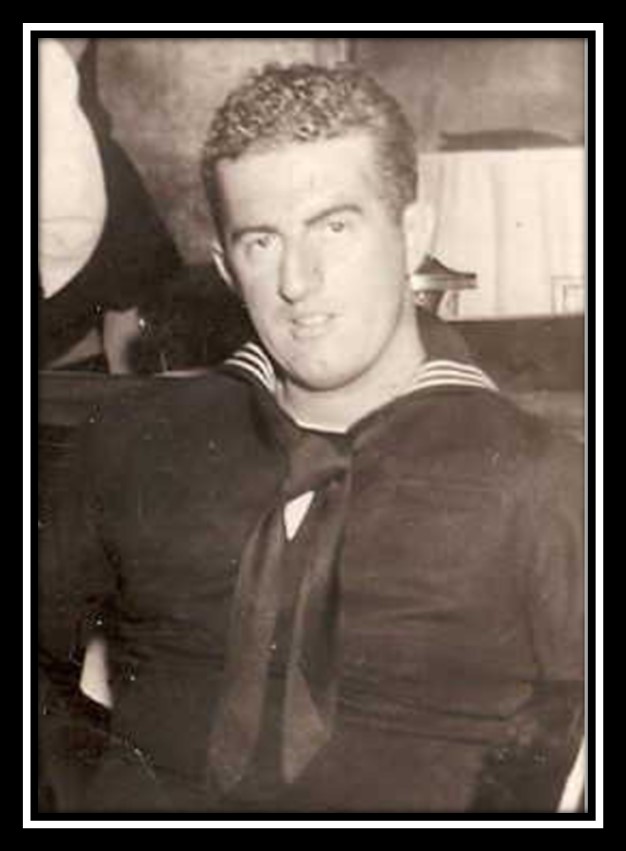
Born: March 31, 1916
Died: June 26, 1979
John F. Evans Sr.
Boatswain's Mate 1st Class
Commendations: See details
Served During:
WWII,
Served In:
- US Navy
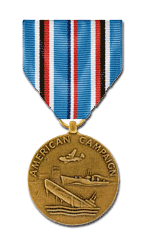

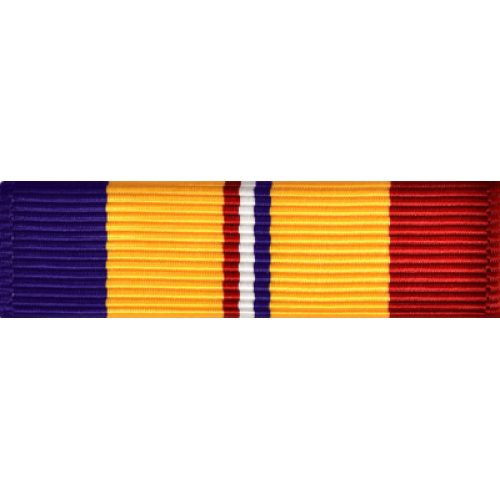

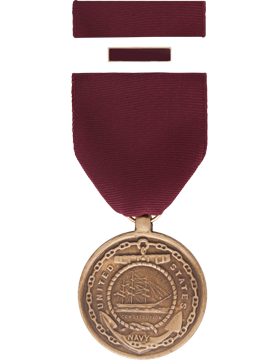


John Evans Sr. during WWII (Asiatic-Pacific Theater).

USS Sarasota (APA-204)
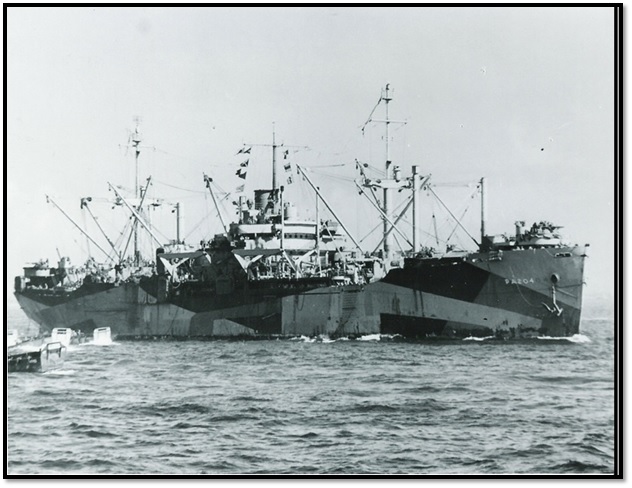
Navy Good Conduct Medal, World War II Victory Medal, American Campaign Medal, Asiatic-Pacific Campaign Medal, Combat Action Ribbon, Discharge Button, Honorable Service Lapel Pin, Seabee Insignia,
USS Sarasota (APA-204). USS Sarasota (APA-204) was a Haskell-class attack transport that saw service with the US Navy in World War II, Korean War Era and after.
Sarasota was laid down under Maritime Commission contract (MCV hull 552) on 11 April 1944 by the Permanente Metals Corporation of Richmond, California, launched on 14 June 1944, acquired by the Navy on 16 August 1944 and commissioned the same day, Comdr. James I. MacPherson, USNR, in command.
Operational service
World War II
Following shakedown, Sarasota embarked Naval Construction Battalion units and departed California on 21 October. On 9 November, she arrived in Seeadler Harbor, Manus.
Explosion of the Mount Hood
The next day, ammunition ship USS Mount Hood carrying approximately 3,800 tons of ordnance material, exploded, causing damage to ships and men within 2,000 yards. Immediately afterward, Sarasota’s small boats carried first aid parties to stricken ships and craft, and her sick bay took in more seriously wounded personnel for emergency treatment.
Invasion of Luzon
Two days later, the APA steamed to Hollandia and during the next week, transported troops and equipment to Biak, Mios Woendi, and Milne Bay – then returned to Manus. On the 27th, she sailed again, and after calling at Finschhafen, put into Empress Augusta Bay, Bougainville, to load units of the 2d Battalion, 129th Regimental Combat Team, 37th Infantry Division. Landing exercises at Lae followed, and, on 21 December, she returned to Manus to stage for the invasion of Luzon.
As flagship of Transport Division 8, Sarasota got underway with TU 79.3.3 on the 31st. On 8 January 1945, having survived Japanese kamikaze attacks, she approached her destination. On the 9th, she rode in Lingayen Gulf as her boats took the troops into “Crimson Beach” near the town of Lingayen.
After the landings, Sarasota steamed to Leyte, transferred casualties she had received from the beaches of Lingayen Gulf, and, on the 21st, loaded troops of the 34th Regimental Combat Team, 24th Infantry Division, in preparation for operation “Mike VII”, the landing in Zambales Province, Luzon. On 26 January, Sarasota again sailed north. Three days later, she landed the assault troops on “Blue Beach”, west of San Antonio, then departed the area.
Invasion of Okinawa
Returning to Leyte, she remained through February. In March, she embarked men and equipment of the 2d Battalion, 381st Regiment, 96th Infantry Division, conducted training operations, and, on the 27th steamed from Philippine waters. On 1 April, she stood off the Hagushi beaches of Okinawa as her LCMs and DUKWs (popularly pronounced “duck”) landed the troops on the “White Beaches.” Their equipment followed and, by the 4th, Sarasota had completed offloading. She then shifted to Kerama Retto, assisted in offloading the damaged attack transport USS Henrico and prepared for the assault on Ie Shima.
Invasion of Ie Shima (Considered a part of the Battle of Okinawa.)
(Iejima (伊江島) is an island in Okinawa Prefecture, Japan, lying a few kilometers off the Motobu Peninsula of Okinawa Honto.) On the 16th, she landed units of the 305th Regimental Combat Team on that island off the Motobu Peninsula. Manny Espinoza, Seaman, of the USS Sarasota was wounded on the Beach, and was awarded the Purple Heart Medal. U.S. journalist Ernie Pyle died there. There is a monument dedicated to his memory on the southern part of the island. Every year on the weekend closest to his death, 18 April, there is a memorial service.
Three days later, she returned to the Hagushi anchorage and, on the 22d, departed the Ryūkyūs for the Marianas.
At the end of April, Sarasota disembarked Okinawa casualties at Saipan. On 2 May, she sailed for the Solomons, whence she carried general cargo, Marines, Army hospitalmen, and Navy passengers to Guam. From there, she transported casualties to Pearl Harbor, then continued on to San Francisco.
After availability at Seattle, she embarked Army troops and, on 18 July, again headed for Okinawa. She arrived in the Hagushi anchorage on 12 August and began disembarking her reinforcement troops and, offloading her cargo. Three days later, hostilities ceased.
After hostilities
On the 29th, the APA shifted to Naha to load her first contingent of occupation troops, units of the XIV Corps. On 8 September, she disembarked those troops at Jinsen, Korea. On the 14th, she returned to Okinawa, whence on 1 October she delivered marines to Chinwangtao. Following offloading, she assumed station ship duties in the Tientsin-Taku area, and, at the end of November, she was reassigned to transport duties, this time with Operation Magic Carpet to carry servicemen back to the United States.
Sailing to Sasebo in early December, she embarked units of the 5th Marine Division and got underway for San Diego, arriving on the 24th. Between 9 January and 19 February 1946, she completed a second “Magic Carpet” run, then prepared for inactivation.
Post-World War II operations
In early March, she moved to San Francisco for overhaul, and in June, she was towed to Stockton, where she was decommissioned on 1 August and berthed with the 19th (Inactive) Fleet. Four years later, Sarasota was ordered activated. Recommissioned on 3 February 1951, she conducted training operations and underwent alterations into June.
On the 20th, she sailed for Panama, and, on 13 July, she arrived at Norfolk, Virginia, her new home port. For the remainder of 1951, the APA trained Marine Corps units in exercises off the east coast and in the Caribbean. With the new year, 1952, however, she sailed east, with units of the 8th Marines embarked, and for the next three and one-half months operated in the Mediterranean as a unit of the 6th Fleet.
Final decommission
Decommissioned on 2 September 1955, she remained in reserve until transferred to the Maritime Administration in June 1966. Her name was struck from the Navy List on 1 July. In 1974, Sarasota was still in the custody of the Maritime Administration, berthed in the James River as a unit of the National Defense Reserve Fleet.

